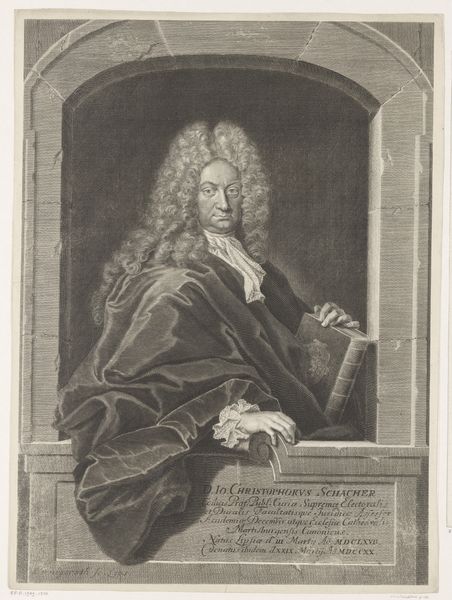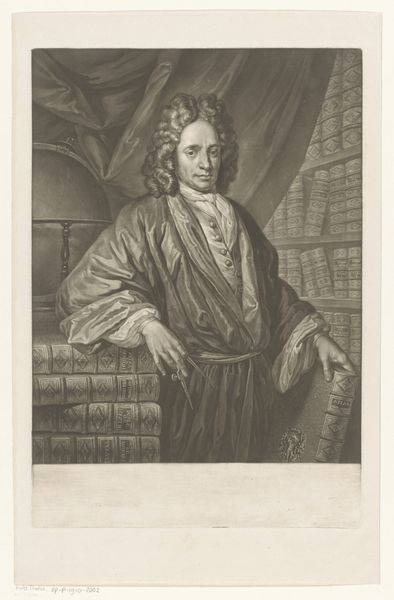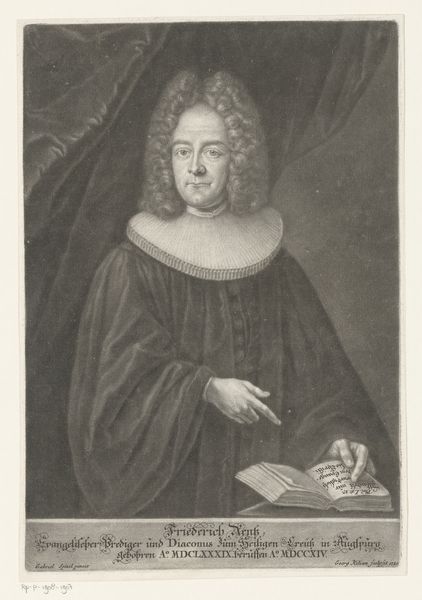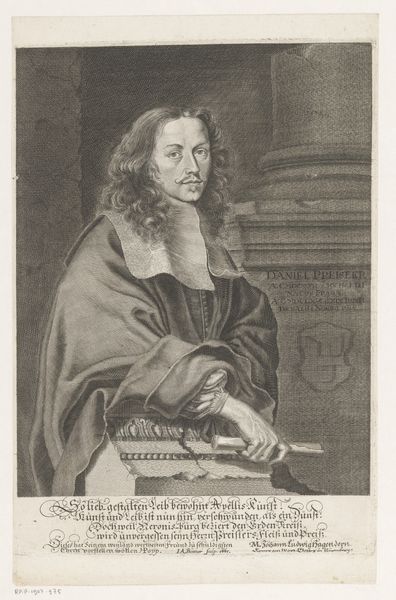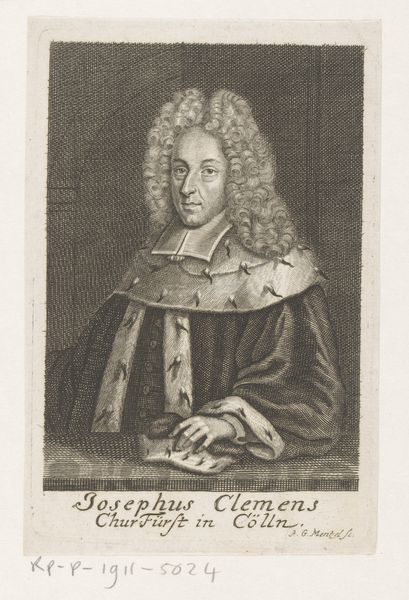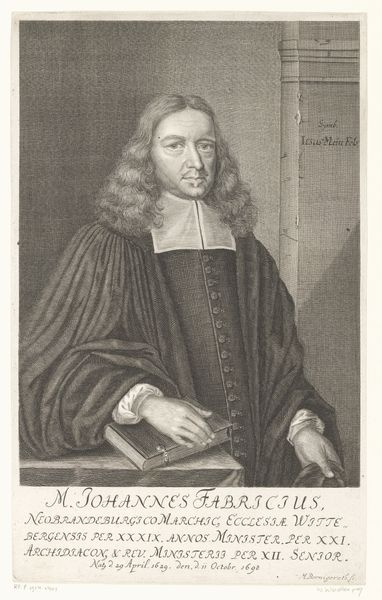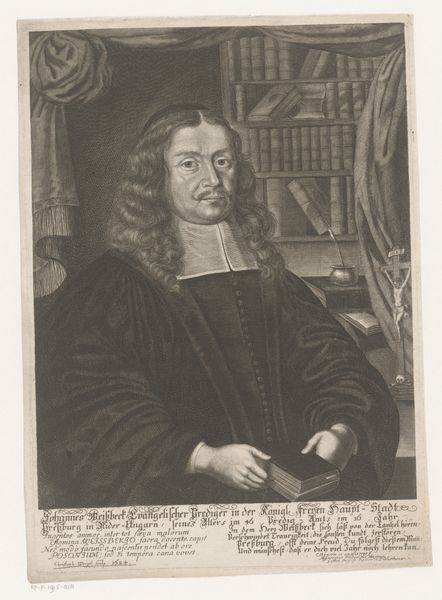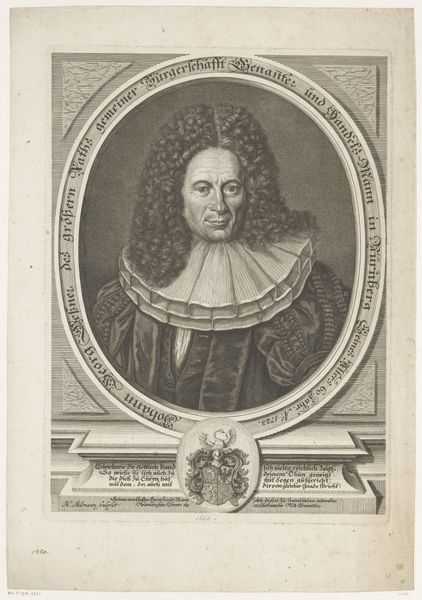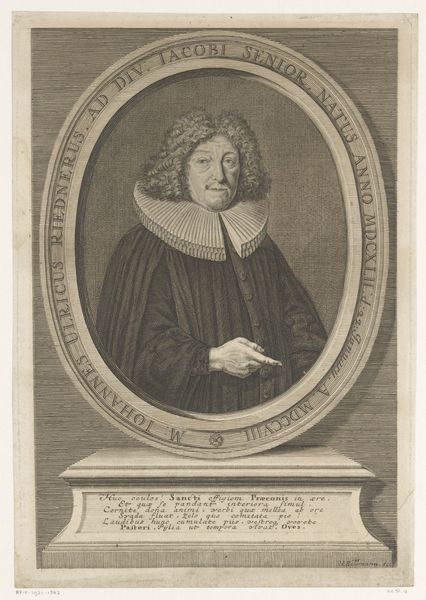
engraving
#
portrait
#
baroque
#
history-painting
#
engraving
Dimensions: height 291 mm, width 188 mm
Copyright: Rijks Museum: Open Domain
Curator: Let’s discuss this engraving, "Portret van Johann Heinrich Feustking," dating from 1713-1733 by Martin Bernigeroth. It's a Baroque portrait, currently held at the Rijksmuseum. Editor: The engraving has such a formal, almost austere feel to it, even with the wig. It’s very detailed, the lines creating impressive shading. What do you see in this piece, beyond just a portrait? Curator: The symbolic language is fascinating here. The subject's clothing signals his role as a clergyman. The books in the background certainly refer to faith and intellect. Consider the positioning of his hand. Do you see a gesture of benediction, of authority, or perhaps simply a scholar displaying his learning? The family crest or coat-of-arms tells of the importance of lineage. Editor: So the visual cues offer deeper insights into Feustking’s identity beyond his physical appearance? Curator: Precisely. We're meant to understand his social standing, intellectual prowess, and spiritual devotion. These images created cultural memory of what was considered important in society. They had psychological impact for that society to look back upon, long after the life of the man was over. Can you sense that power coming from the print? Editor: It is there when you point it out. Before I was simply interpreting how sternly he appeared to be looking at me. Thank you for opening my eyes. Curator: Indeed, exploring the imagery in this way truly deepens our understanding and appreciation of art, both then and now. Editor: Absolutely. This has given me a fresh perspective on how portraits can communicate so much more.
Comments
No comments
Be the first to comment and join the conversation on the ultimate creative platform.
